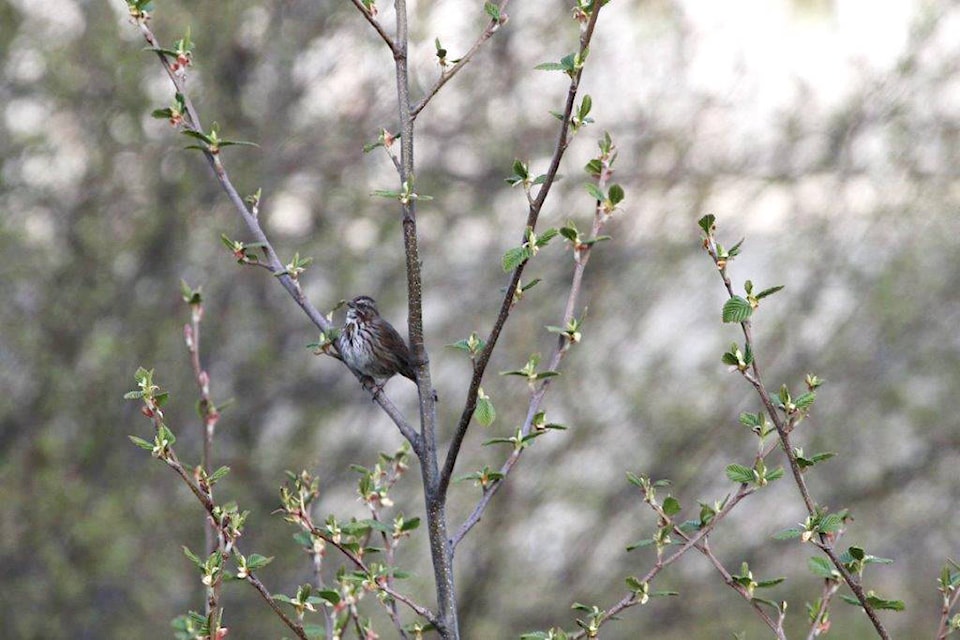By Margo Hearne
It’s been cool and damp but the birds love it. So do the berry bushes. Everything is a lush green; the hawthorne is in full bloom and the roses are getting ready. Most of the rhododendrons are getting past their prime but are still beautiful. Sapsuckers are feeding young, all clinging to the nearby hemlock. Townsend’s Warblers hop into the birdbath for a quick splash and the chickadee is dashing through the salmonberry patch.
The Song Sparrow is still in stealth mode and is as sturdy and assertive as a tiny tank. The young are still in the nest. The sparrows have invested so much energy to get this far, they can’t allow the chicks to starve at the last moment. Young eagles are screaming to be fed; some have already left the nest and are leaning precariously from the high branches, not yet sure if their wings will carry them. It’s so wonderfully active and alive.
Sadly, Barn Swallows are taking a beating again this year. Even though they are “threatened” (i.e. “likely to become endangered if limiting factors are not reversed” under the Species at Risk Act) and it’s illegal to tamper with their nests, people still knock them down and let the eggs and unfledged young die.
Compared to a small swallow, we are large and destructive; it’s not a huge amount of work to put a piece of cardboard or plywood on the ground under the nest to catch the droppings.
We could be proud of the birds and put up signs extolling their beauty and usefulness in keeping the aerial bugs down, especially in public places such as airport terminals where a lot of people come and go. Education and sensitivity go a long way towards protecting all disappearing birds. Happily, not everyone has taken against the swallows; many friends and neighbours love having them around and seeing them return each year. If you know of any nests that have been destroyed with either eggs or young, let us know who and where and we’ll try to initiate some action. Doing something is better than doing nothing.
Most of the “passage migrants” have now gone north but out in Masset Inlet large flocks of Pacific Loons gather. They are in breeding plumage with dashing black throats and grey heads. Unlike Common or Red-throated Loons that are more solitary, Pacifics flock and feed together co-operatively.
At one time they helped Japanese fishermen earn a year’s livelihood in February and March; the loons would spook small fish into shoals to be caught by the fishermen. As a result, they were worshipped as messengers from heaven. The Pacifics here are on their way to the inland Arctic tundra lakes when the ice clears.
Birds have their own niche. Eastern Phoebes are incredibly rare on island, but when neighbours contacted us to say they had one in their garden we rushed to find it and there it was, feeding in a place of green, beauty and calm; a lovely spot on the globe. Birds will find their preferred habitat and, again, the phoebe sighting is strong proof that without the habitat they need they will simply disappear.
Then there are the Crested Auklets. They like swift currents, upwellings and fast tidal rips, which is where Peter saw a small flock last week at the edge of the Dogfish Banks, 14 miles off Haida Gwaii. hecatebird@gmail.com
